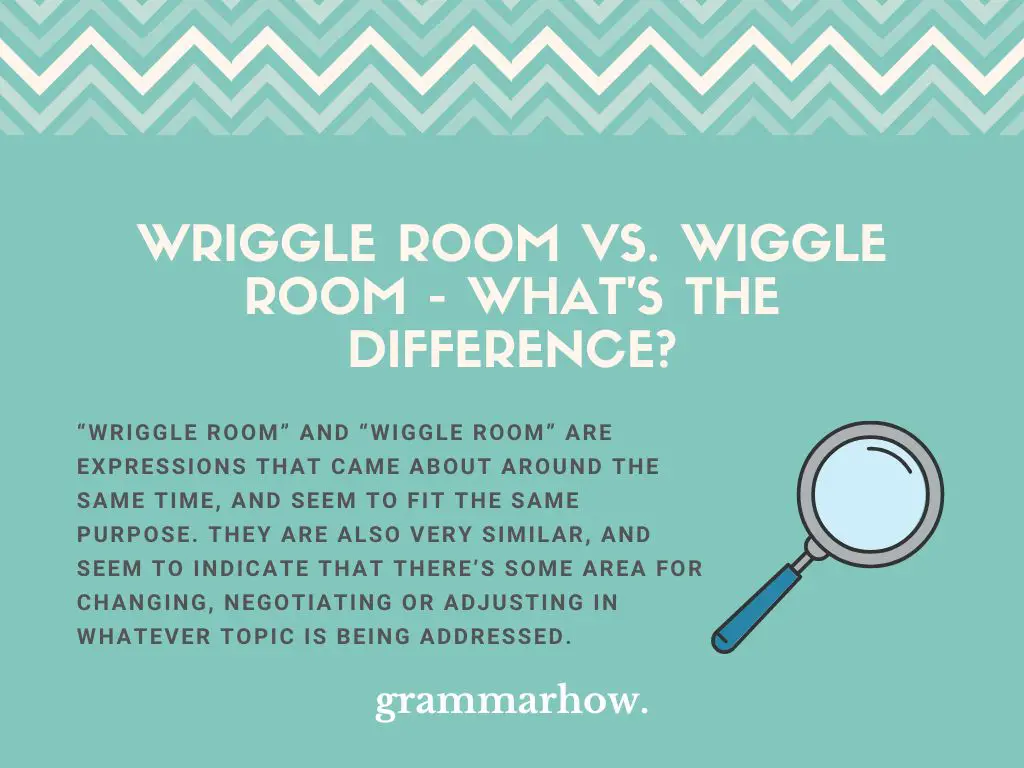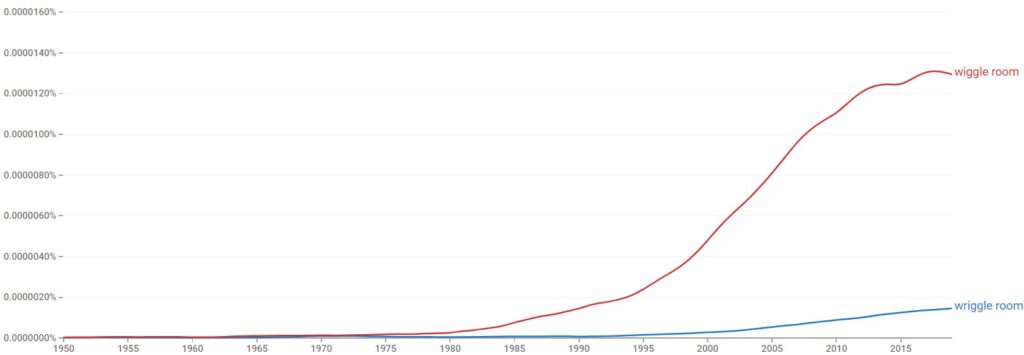When negotiating, do you ask for a “Wriggle Room” or a “Wiggle Room”?
This is one of those rare times when two expressions are almost the same, and it’s up to the speaker’s preference which one to use. Let’s dig deeper into both “Wriggle Room” and “Wiggle Room”, and learn.
Wriggle Room vs. Wiggle Room – What’s the Difference?
“Wriggle Room” and “Wiggle Room” are expressions that came about around the same time, and seem to fit the same purpose. They are also very similar, and seem to indicate that there’s some area for changing, negotiating or adjusting in whatever topic is being addressed.

Take a look at the examples below:
- Quentin left some wiggle room in his schedule.
- There’s no wriggle room on Maria’s offer.
- I don’t think I can give you any wiggle room in this.
- Can you ask if there’s any wriggle room in their proposal?
In every case, it seems the expressions “Wriggle Room” and “Wiggle Room” convey the same meaning. Let’s look at each separately, and see what we can find out about them.
Wriggle Room
“Wriggle” means a movement, in which the individual twists and turns quickly. When you ask for “Wriggle Room” it means you hope to get things moved here and there, to make space for what you’re requesting. It infers that a small change (nothing major or absurd) is being asked for.
Let’s look at how to use “Wriggle Room” in a sentence:
- I wish we had some wriggle room in this negotiation.
- It’ll be very hard to bring the conversation further without any wriggle room.
- If there’s any wriggle room on the schedule, Peter would like to have Friday off.
- This is a standard contract, with no wriggle room.
- Why are we even talking, if there’s no wriggle room?
To ask for “Wriggle Room” is to ask for small changes or adjustments on what’s being discussed. Let’s see now if “Wiggle Room” carries the same meaning.
Wiggle Room
To “Wiggle” is to move (or cause something to move) side to side or up and down, with small or rapid movements. Therefore, “Wiggle Room” indicates moving things a bit to make space for a new request or change. It’s really not that different from “Wriggle Room”.
This is how to use “Wiggle Room” in a sentence:
- The professor offered no wiggle room on his schedule.
- Do you have any wiggle room on your offer?
- If they want to sell it fast, Emma should have some wiggle room.
- It’s hard to negotiate when you have no wiggle room.
- Flights work on tight schedules, so there’s no wiggle room.
To say that there’s no “Wiggle Room” means there’s no space for any changes to be made. A negotiation with no “Wiggle Room” is a take it or leave situation, whereas a negotiation that has some “Wiggle Room” indicates there’s space for an offer or compromise.
Which Phrase Is Used the Most?
Do you usually say “Wiggle Room” or “Wriggle Room”? We’re curious to see which one of those two forms is used more often. Take a look at the graph from Google Ngram Viewer below.

Although both forms became more frequently used around the 1980’s, “Wiggle Room” seems to be more prevalent in people’s daily life.
That’s not to say one form is correct and the other one isn’t – perhaps “Wiggle Room” is simpler, or just came to be more common. That would explain why we see it more often.
Final Thoughts
“Wriggle Room” and “Wiggle Room” are both correct and have the same meaning. It’s all about which one you like best and prefer to use. When asking for small changes of adjustments, both “Wriggle Room” and “Wiggle Room” will serve the purpose and help you convey the same message.

Martin holds a Master’s degree in Finance and International Business. He has six years of experience in professional communication with clients, executives, and colleagues. Furthermore, he has teaching experience from Aarhus University. Martin has been featured as an expert in communication and teaching on Forbes and Shopify. Read more about Martin here.
